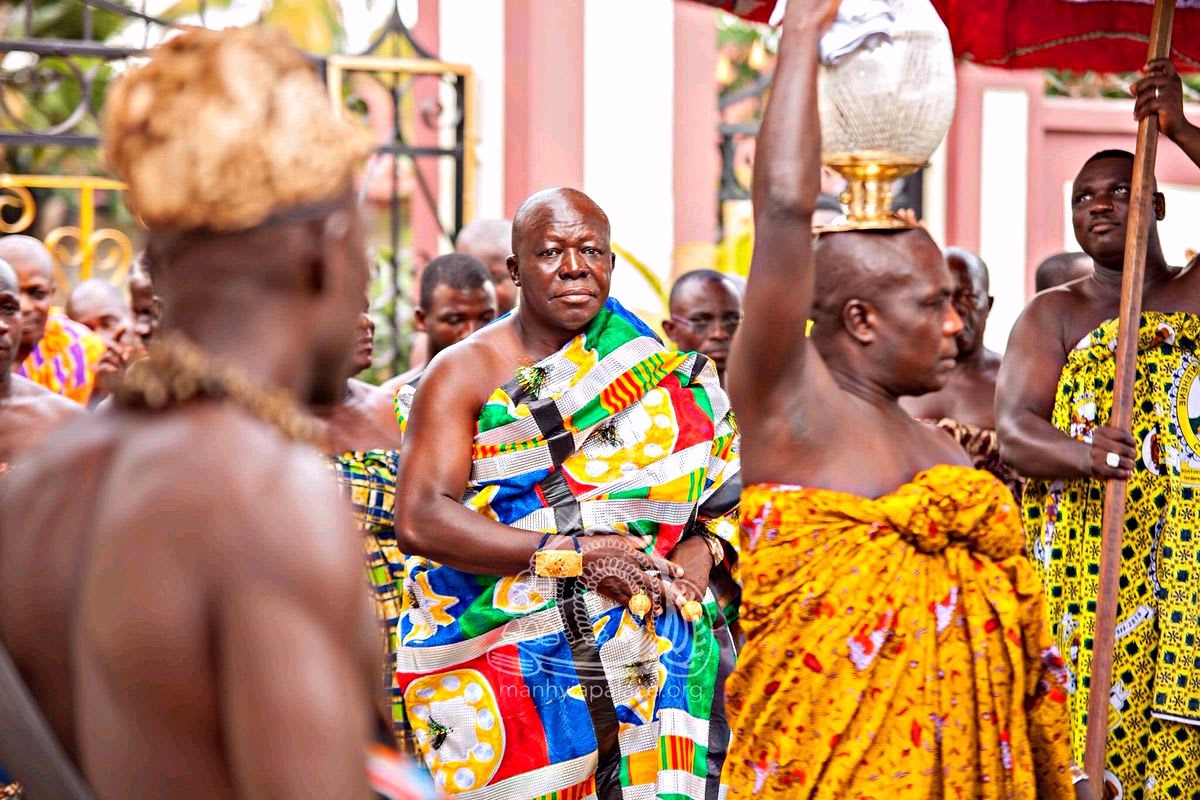The Asante, or Ashanti, Empire was a powerful state in the southern part of present-day Ghana that emerged in the late 17thcentury and was eventually conquered by the British in the 19thcentury.
In this article, we will discuss how the African empire rose to prominence and the events that led to its fall.
The Birth of the Asante Empire
Although the Asante Empire had been founded in the late 1600s, the unified empire was not established until 1701, when Osei Tutu was installed as Asantehene (King of the Asante). Tutu, alongside his Priest Komfo Anokye, united various independent chiefdoms of Akan-speaking people into a single powerful state, of which Kumasi was capital.
Tutu created the Golden Stool, a symbol of the Empire’s power and unity, by which all subsequent kings were enthroned. He also created a constitution, reorganised and centralised the military and established an annual cultural festival, Odwira, to symbolise the new union.
Under Tutu’s leadership, the Asante were able to build a thriving economy by trading in gold and later, slaves.
Tutu claimed all gold mines as royal possessions and made gold dust the official currency in the Empire. Gold dust was also often used for ornamental purposes by both the wealthy merchant class and the poorer class. However, the larger gold ornaments owned by the royal family were of far more value. From time to time, the royal ornaments would be melted down and made into new jewellery and statues for display.
Although the gold trade was still lucrative, the slave trade eventually became much more vital to the economy towards the end of the 18thcentury.
Initially, the Asante sold slaves to Mende and Hausa traders in exchange for goods from North Africa and (indirectly) Europe along the Trans-Saharan Trade Route.
Then, at the start of the 19th century, the Asante shifted their focus to the Trans-Atlantic Trade Route, supplying slaves to British, French and Dutch traders on the coast in exchange for luxury items and manufactured products. But most importantly, the European traders provided firearms to the Asante, further empowering the empire’s territorial expansion.
After Osei Tutu died in 1717, a period of chaos ensued within the empire, only ending with the accession of Opoku Ware in 1720. It was under Ware, whose rule lasted 30 years, that Asante reached its fullest extent in the interior of the empire. Subsequent kings Osei Kwadwo, Osei Kwame and Osei Bonsu established a strong centralised state with an efficient, merit-based bureaucracy and a sophisticated communication system.
The Decline of the Asante Economy and Conflict with the British
In 1807, Great Britain abolished the slave trade, thereby diminishing the global demand for slaves and crippling the Asante Empire’s economy.
That same year, Osei Bonsu occupied southern Fante territory, an enclave around the British headquarters at Cape Coast.
The decline in trade relations, along with disputes over the Fante territory, sparked friction over the following decade, eventually culminating in warfare in the 1820s. The Asante defeated a British force in 1824 and then entered a peaceful agreement with them in 1831, closing the door to conflict for the next 3 decades.
In 1863, under Kwaku Dua’s rule, the Asante instigated conflict against the British once more by sending their forces to occupy the coastal provinces. 6 years later, the British took possession of Elmina, a region over which Asante claimed jurisdiction, and in 1874, British marshal Garnet Wolseley led an expeditionary march on Kumasi. Though Wolseley and his party were only able to occupy the capital for one day, the expedition revealed to the Asante the comparative weakness of their military and communication systems. Subsequently, there were several secessionary revolts in the northern provinces.
Also in that year, the British officially merged the old southern provinces—of which Asante was part—into the Gold Coast colony. The then king of the Asante Empire was then deposed, giving way to Mensa Bonsu who tried to adapt the empire’s agencies to the new situation. Bonsu reorganised his army, installed some Europeans in senior posts and increased Asante resources. However, the British political agents prevented him from restoring Asante imperial power. The empire’s decline continued under Bonsu’s successor, Agyeman Prempeh I, who ascended the throne in 1888.
In 1900, Frederick Mitchel Hodgson, the British governor of the Gold Coast, demanded for the Golden Stool to be handed to him. In response, Yaa Asantewaa, the Asante Warrior Queen Mother, led a military revolt against the British which evolved into the War of the Golden Stool. The war lasted about six months, ending in British victory in July of the same year. Consequently, Yaa Asantewaa, Prempeh I and some other Asante leaders were exiled to the Seychelles Islands.
Nearly two years later, the Asante Empire was officially declared a British crown colony on 1st January, 1902. On the same day, the former northern provinces constituted the Protectorate of the Northern Territories of the Gold Coast.
In 1935, an Asante Confederacy Council was established and the Asantehene was restored, granting the Asante some level of self-rule.

Oyindamola Depo Oyedokun
Oyindamola Depo Oyedokun is an avid reader and lover of knowledge, of most kinds. When she's not reading random stuff on the internet, you'll find her putting pen to paper, or finger to keyboard.
follow me :
Leave a Comment
Sign in or become a Africa Rebirth. Unearthing Africa’s Past. Empowering Its Future member to join the conversation.
Just enter your email below to get a log in link.


Related News
The Rise and Fall of the Ancient Kongo Kingdom
Nov 20, 2023
The Real Reason Why Africa Was Called the Dark Continent
Oct 31, 2023
10 African Countries that Changed Their Names and Why
Oct 24, 2023